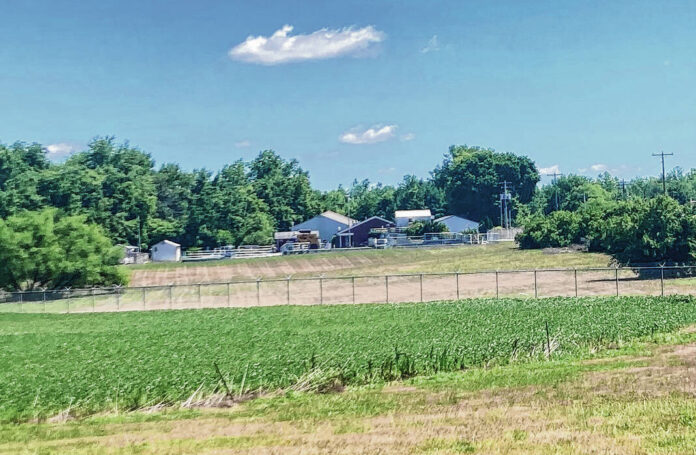
Brownstown’s wastewater treatment plant is at 1600 W. Commerce St., Brownstown.
Tribune file photo
BROWNSTOWN — After more than a year of planning, the Brownstown Town Council recently received some projected costs and savings for three possible energy conservation projects, including one converting the wastewater treatment plant from electric to solar.
Rick Anderson, business development director for Veregy, briefly discussed the proposed price tags for the work that ranges from $787,500 to $1.29 million during a recent council meeting.
He said the next step in the process would be approval by the council to proceed with one, two or all three projects.
“We would go out and get firm pricing,” said Anderson, who was hired as the consultant for the work in late 2022.
He said Veregy feels very confident the pricing is going to come back close to projections based upon other projects he has been involved with recently.
“I just did one for a school system up in Indianapolis, and actually, our firm pricing came back about $60,000 less than what we had projected,” Anderson said. “It’s not going to be more. Hopefully, it will come down a little bit. We will put drawings and things together for what we need to do and then go out and get pricing.”
He also said council members would be consulted about the possibility of local contractors doing some of the work.
“If you guys have people you have used before, we would be happy to keep the dollars in county,” Anderson said.
The first project would see the conversion of the wastewater treatment plant to solar power at a cost of $787,500. That move would produce projected savings of $1.778 million over 25 years. The solar panels have a 25-year power production guarantee from the manufacturer.
The second option would involve the conversion of more than 230 streetlights in neighborhoods from sodium vapor bulbs to LED at a cost of $154,000.
The cost of both projects would be $942,000 with projected savings of $2.66 million over 25 years.
The third option, which has a price tag of $348,000, would see the replacement of the town’s decorative lighting along Main Street, around the courthouse and other areas.
The projected cost for all three projects would be $1.29 million.
The town plans to borrow the funds for the work and repay it over a 20-year period from guaranteed savings from the project/projects. The state’s energy savings program allows communities to do guaranteed savings projects, which could include lighting, solar and heating, ventilation and air conditioning.
Anderson said the town also will receive a 30% rebate for the solar part of the project ($200,000) costs through the federal Inflation Reduction Act as long as the projects are started and completed this year. That funding, however, would take 12 to 18 months to arrive once the solar is installed, he said.
That means the check would arrive hopefully in 2024 but potentially in 2025, Anderson said. It could be used to buy down the loan or other purposes.
He said there are two issues that make doing at least some of the work soon important.
One is that electric utility bills increased 20% this past year, and the second is the federal rebate.
“This is really the time to be doing something,” Anderson said.
The council tabled a decision until its Feb. 20 meeting to allow Anderson to provide information about how much electric bills might go down depending upon which projects are completed.
